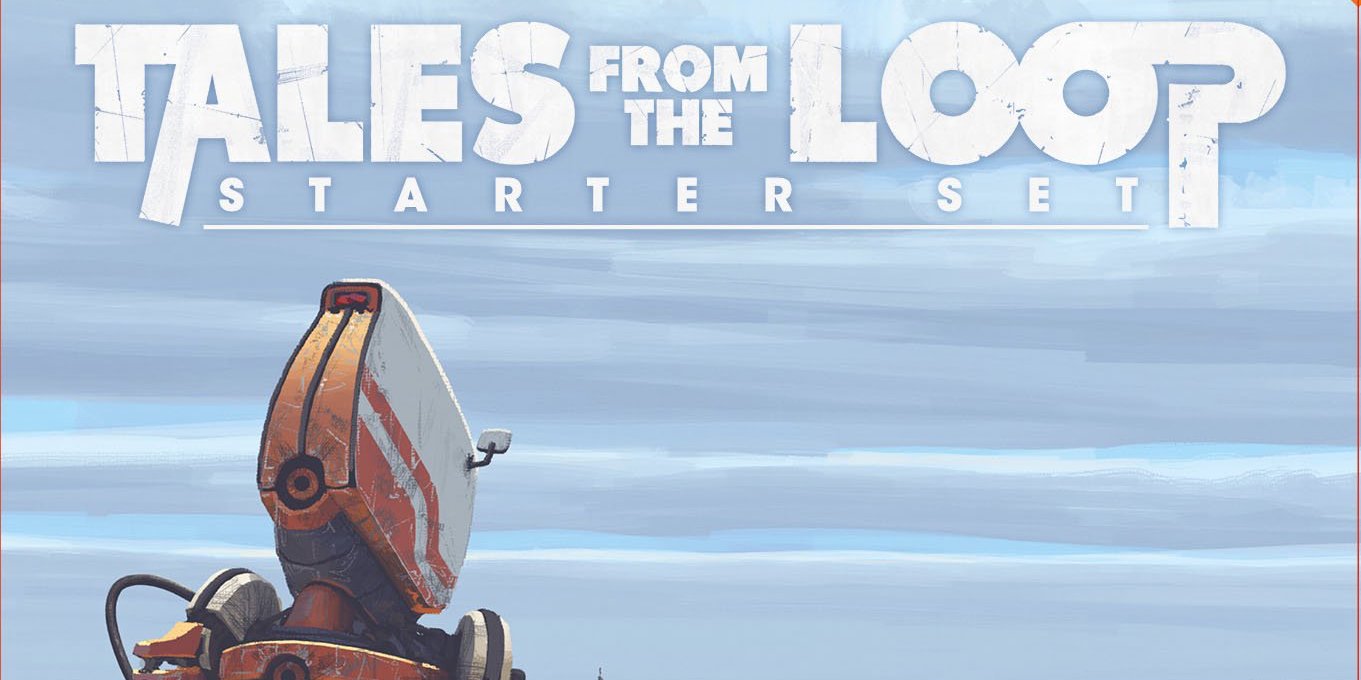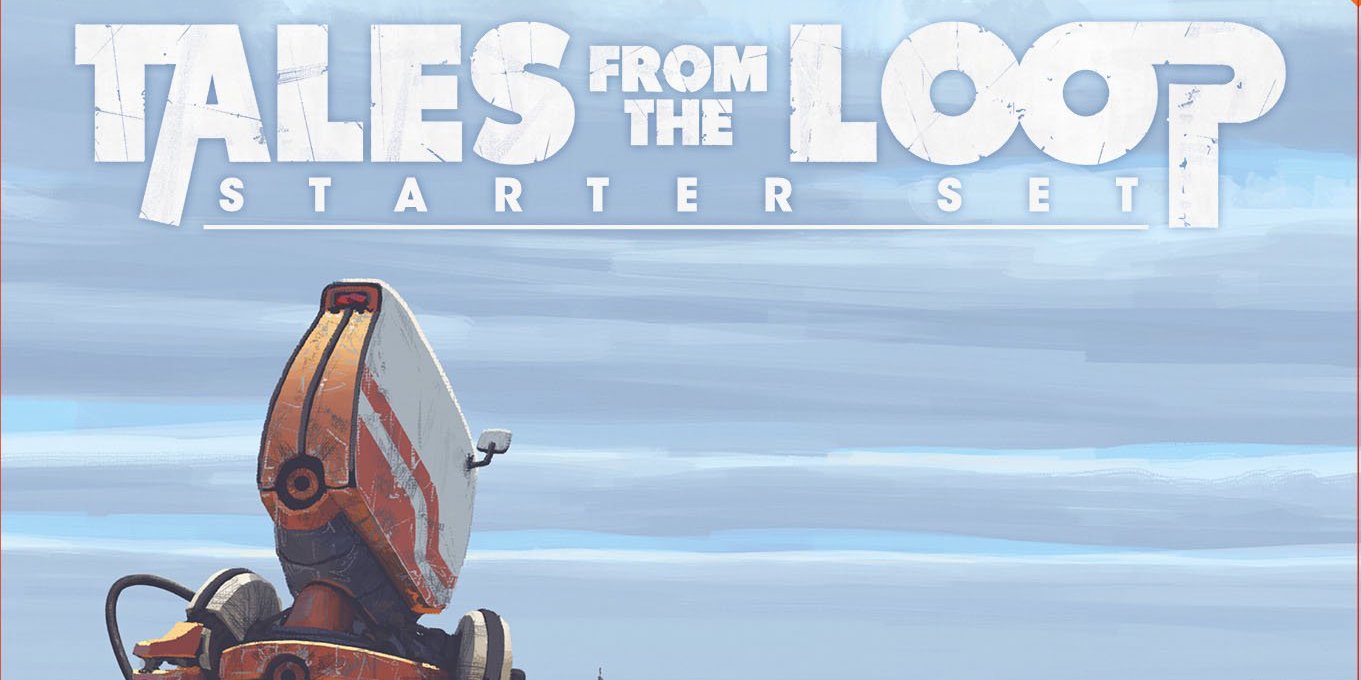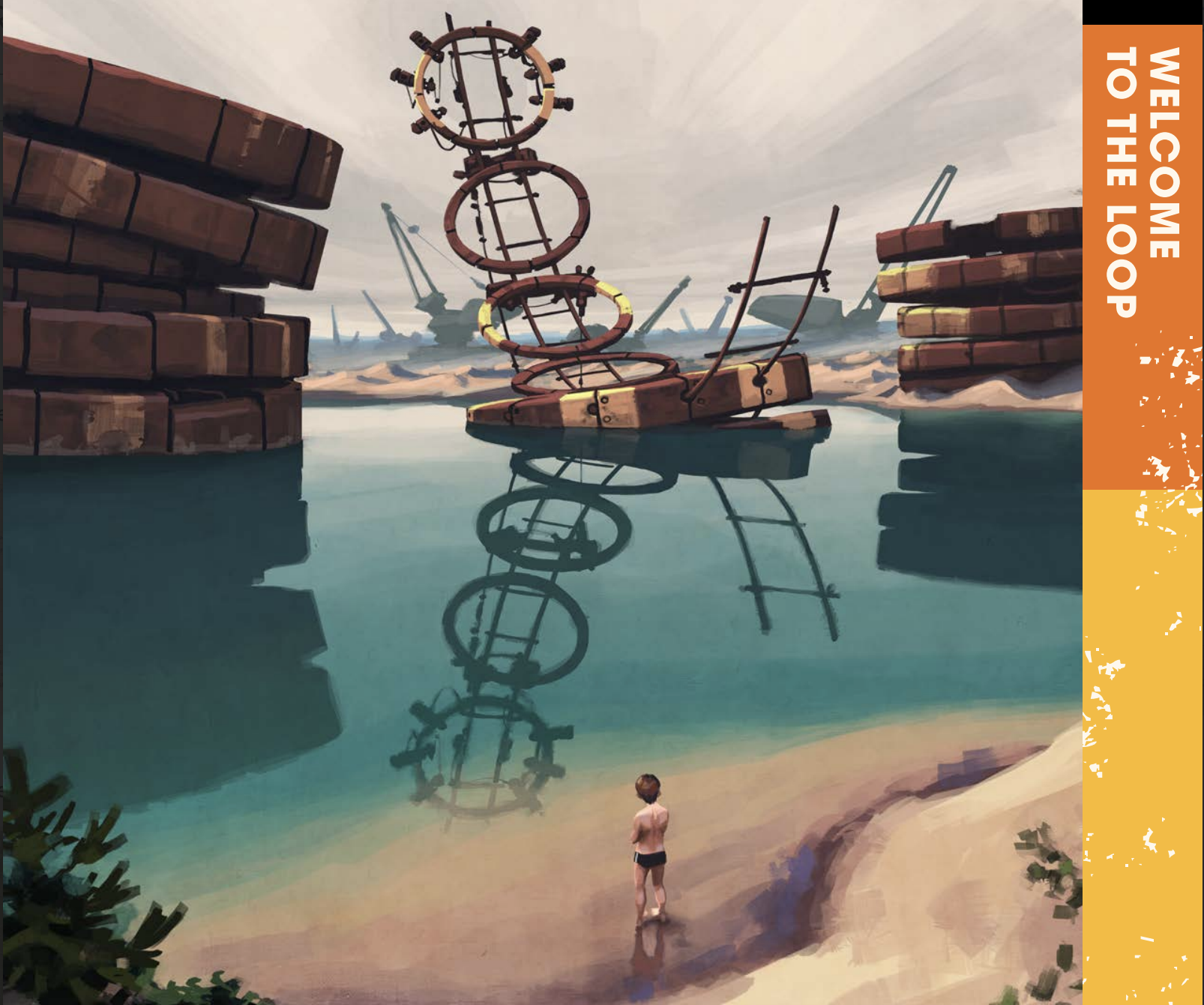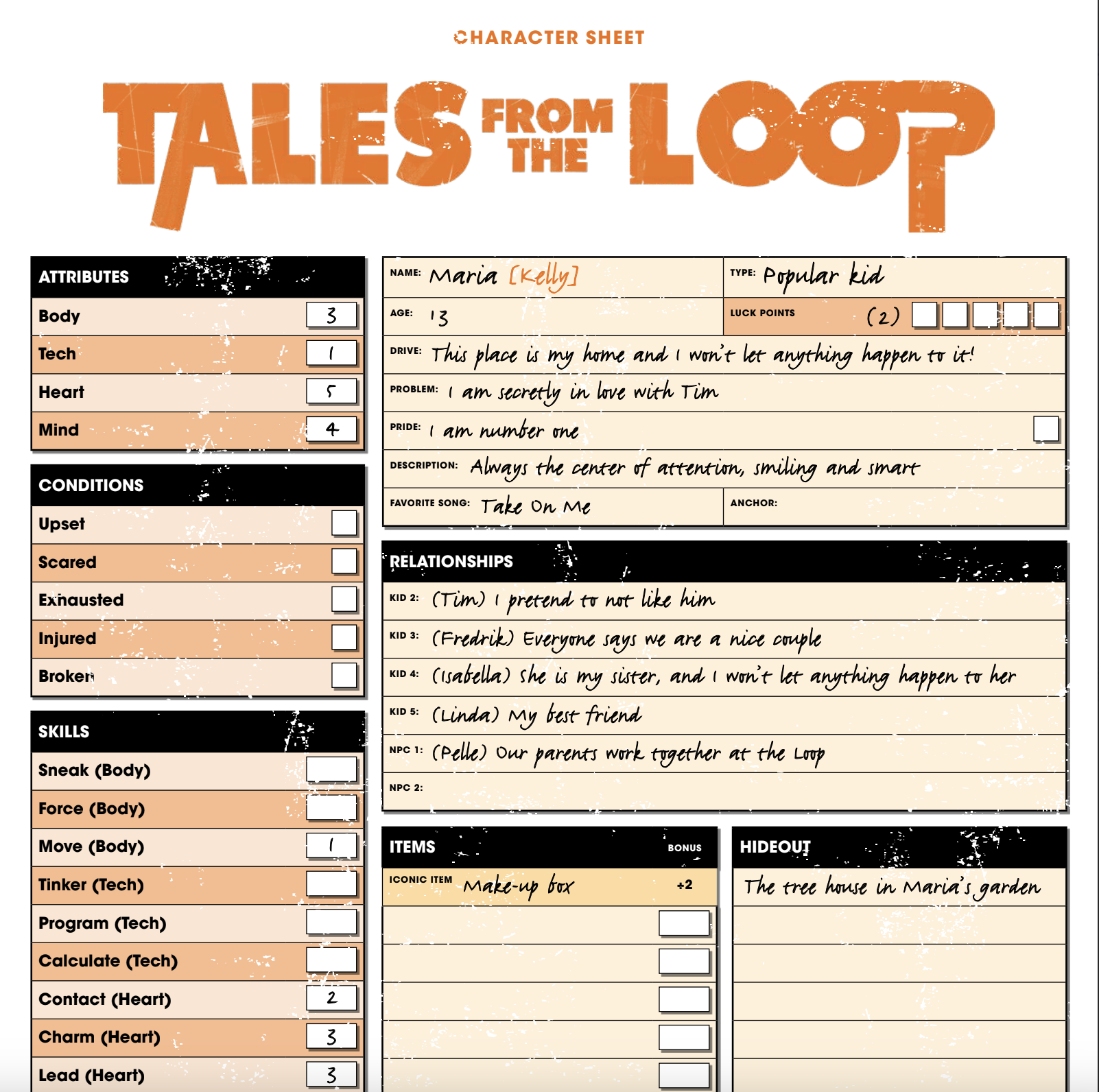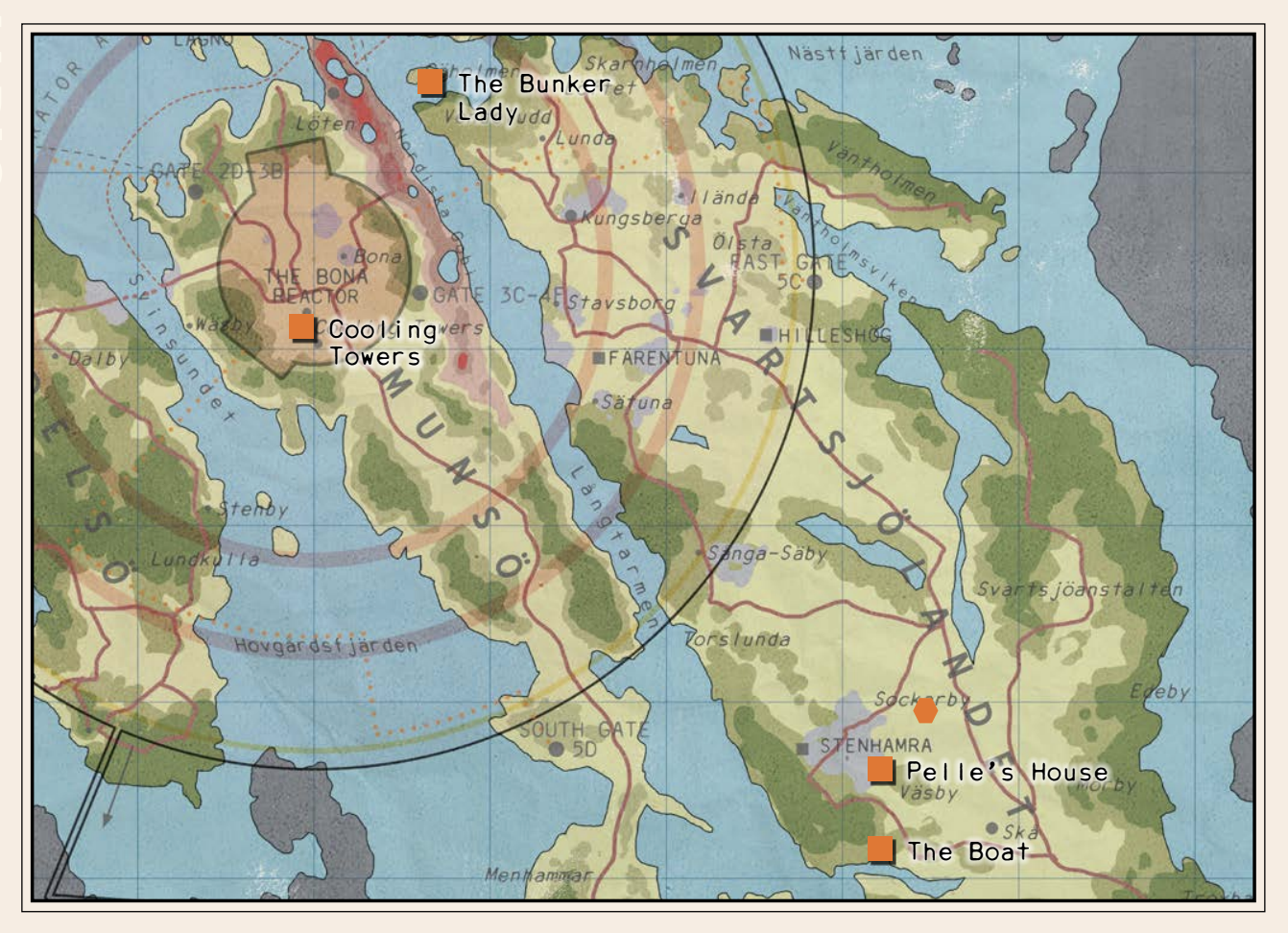Podcast: Play in new window | Download (Duration: 43:25 — 35.7MB)
Subscribe: Apple Podcasts | Google Podcasts | Stitcher | TuneIn | RSS | More
Podcast (httptherpgacademy-comfeedlive): Play in new window | Download (Duration: 43:25 — 35.7MB)
Subscribe: Google Podcasts | RSS
Hello and welcome to The RPG Academy’s The Review series. Today Michael is joined by first-time reviewer JimmyLogan to review the Tales from the Loop – Starter Set.
Tales from the Loop is an RPG by Free League Publishing, publishers of various IP based games such as Alien, Lord of the Rings and The Walking Dead. This review covers the ‘Starter Set’ with a sample adventure. Free League provided us with a digital copy of the Tales from the Loop Starter Set for this Review.
The 32-page rulebook is comprehensive and enjoyable to read, featuring clear color choices and fonts, along with well-delineated example text. Simon Stålenhag’s illustrations, coupled with what appears to be ‘company paper’ with typewritten information, work together to set the tone, capturing the essence of Kids in the ‘80s. The introduction is a well written piece of fiction that drops you directly into what is referred to as the “loop universe.” It moves into first person story telling and finally into an example of how this situation is resolved with the dice. For those new to role playing games, this is a great introduction! Whether or not you’ve seen the Amazon Prime television series, there’s enough background information provided for your imagination to run wild.
The show is set in the fictional Mercer, Ohio, while the game is set in Switzerland, as envisioned by the artist. An alternate setting is included as well – Boulder City, Nevada. This is explained in the time line as having been created first, some time during the 1950’s, followed by the Swedish counterpart in the late 1960’s. There are eight pages of world-building, including a fictional timeline of the United States and Sweden. The setting establishes that the fantastical experiences of the Kids are commonplace. Robots and flying machines serve as backdrop elements, taken for granted by the characters. Sufficient real-world history is included, allowing the Gamemaster and players to draw on their own memories of the era. For younger players, inspiration can be derived from television and movies. The included two sided map is reminiscent of those seen in older editions of Twilight: 2000. One side shows the Mälaren Facility and displays towns, islands, the reactor, and the ring network. This attention to detail creates an immersive, ‘in-universe’ experience. The flip side of the map showcases the American counterpart, catering to those preferring a more familiar setting. This side includes Boulder City, Nevada, the reactor, the ring network, and part of Lake Mead. Both sides offer numerous setting options for your Mysteries, the term used for adventures or modules in this system. The designers include a short note about using your home town as this setting. Perhaps the Loop was built there? This would allow you to use local people, streets, buildings and other set pieces for your game.
There are six primary principles that drive the game:
1. Your home town is full of fantastic things.
2. Everyday life is dull and unforgiving.
3. Adults are out of reach and out of touch.
4. Mysteries are dangerous but Kids will not die.
5. The game is played scene by scene.
6. The world is described collaboratively.
Number one is pretty much a given, what with the setting. Number two is a reminder that the characters are Kids – they are not super heroes and they don’t have an exciting life. What we see as spectacular is old hat to them. Number three is a reminder that the Kids are to be considered on their own for almost the entire Mystery. Some adults are mentioned as being contacts for more information, but generally speaking the Kids don’t interact with them. Numbers four and five have more to do with noting that the Kids face danger, but will not suffer mortal harm and the ‘scene’ is the method of role playing. Lastly, number six means the GM does not dictate everything in the game.
The Mysteries themselves are the purview of the GM, but the world itself is the result of the group adding their own perspectives. Robots, for example, exist without the need for extensive exploration into their origins, so new ‘tech’ can easily be introduced without scientific explanation. If it fits the world you are creating, it is accepted. The characters that the players use are referred to as Kids. They range in age from 10 to 15 and they have four attributes: Body, Tech, Heart and Mind. Body is obviously for physical challenges like running, jumping, climbing and even fighting. The Tech attribute is used when the Kid needs to program a computer, repair a robot, construct a machine and even to open locks. Heart is about making friends, deceiving people, persuasion and knowing the right people. Mind is about solving riddles and knowing things. It’s also used to find weak points or to otherwise understand something pertaining to nature. Clue gathering falls into Mind as well. Skills are tied to attributes as well, and help with the dice system described below. Like attributes, they are very straight forward, and help narrow the focus of the attribute.
Body, for example, includes Sneak, Force and Move. Your Kid might better very stealthy, but slow, or maybe a strong fighter, but slow and clumsy. These are all elaborated on at the end of the rulebook. Challenges in the game are called Trouble. Things you find are called Items. They can help with the task of overcoming Trouble. Each Kid starts with an Iconic Item that can only be used by them. Other guiding forces for the characters are Drive, a Problem and Pride. Think of these as motivation and guiding forces. The Drive is the why while a Problem is something the Kid has to deal with in everyday life. The GM can use this to put the Kid into Trouble. Pride is more important, and is unique to your Kid. The GM can use this to put the Kid into Trouble, but the Kid can also use it once per Mystery to score an automatic success. Lastly are Relationships. These are with each other and at least one NPC. These service as connections between the Kids and the strange goings on. It could be a parent, police officer, librarian, teacher or anyone else the Kid has a connection with. Conditions are bad things that can happen to the Kids. They can become Upset, Scared, Exhausted or Injured. These are taken as a result of a failed check or to ‘push’ the results of a Trouble check in an attempt to turn a failure into a success. Since they are not defined in detail, it is left up to the GM and the player to decide what is appropriate. These conditions have two effects. First, they are an aide to your role-play, giving you a guide as to how you should role-play the Kid. They also have the mechanical effect of giving a negative to all rolls. Each condition is a minus one, or to put another way you roll one less die. If you are broken, you will automatically fail.
The dice system, named the “Year Zero Game System,” is straightforward. Free League also uses this for their Alien, Blade Runner and Walking Dead RPG’s, as well as others. The GM never rolls. Players roll a number of D6’s based on attributes, skills, and possibly extra dice from their Iconic Item. Success is achieved with at least one “six,” and occasionally harder tasks may require more than one six. This simplicity avoids cumbersome calculations with plusses and minuses. A set of custom dice are included in the box set. I reviewed the PDF, so I can’t comment on their heft. The design is consistent with the artwork and the side with the six also has the logo of the Risenergi corporation, the government agency that operates the Swedish accelerator.
The starter set includes a 16 page introduction adventure called The Recycled Boy. Instructions for a new GM are included so he or she knows how to introduce the Mystery and how to introduce the Kids with a ‘starting scene.’ I found the text comprehensive without being overwhelming. Experienced GM’s will find the information interesting as well and it serves as an introduction to this particular game style. The format aligns with the rulebook design, making it an easy transition. Stats and backgrounds for NPCs, locations, and useful illustrations and maps are provided to assist the GM. Two handouts are included to enhance the table experience as well.
Lastly, the set includes five Kids (characters) for the players to use. Names, backgrounds and even an artist’s interpretation in included for each. Designed with the introduction adventure in mind, these two page handouts include stats for the Attributes and Skills. They also include check boxes for the Conditions as well as prefilled Relationships, Drive, Pride, etc.
Overall, it’s an excellent introduction for new players to RPGs as well as serving as a pregen for the included adventure. While I haven’t had the chance to bring it to the table yet, I can confidently give this a solid B! Though the genre isn’t my go-to, having run spies, Star Wars, and other fantastical settings over the years, I believe this would be a great addition to the rotation. If you’re a fan of the artwork or the show, your rating may be even higher, as it successfully captures the essence without requiring additional suspension of disbelief. The complete package makes it accessible for groups looking to embark on a learning adventure or test the system. An advertised full Core Rulebook encompasses rules for character generation, guidelines for crafting your own Mysteries, and includes some predesigned Mysteries too. If you’re having fun, you’re doing it right – this game will allow you to have fun! Give it a try!
Ratings:
Please consider contributing to my Patreon, making a modest donation via Paypal or even support your show at no extra cost via your purchases on DriveThru RPG.
Email: TheRpgAcademy@gmail
Twitter / Facebook / Website
Our Intro and Outtro music is Fly a Kite by Spectacular Sound Productions used via Creative Commons Attribution License
Playing Roleplaying games can be an amazingly fun time and also a benefit to your well being. If you or someone you know is struggling with your mental or emotional well being, please reach out to someone who can help:
National Suicide Prevention Lifeline: 1-800-273-8255
Crisis Text Line: Text HOME to 741741


